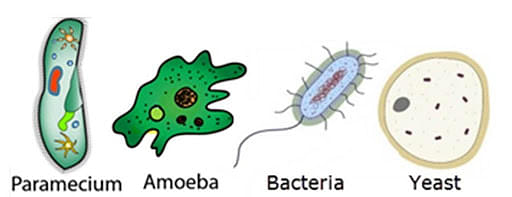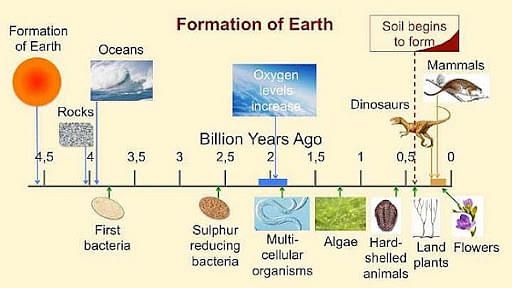Collegedunia Team Content Curator
Content Curator
A multicellular organism is one with a large number of cells. Cellular specialization and division of labour are developed by multicellular creatures. Cells become efficient in a single operation and rely on other cells to complete other tasks. For an organism to function properly, all of its cells must work collectively. Animals, plants, and fungi are multicellular organisms. Multicellular organisms are created in a variety of methods, including cell division and the building of single cells.
What are Multicellular Organisms?
Multicellular organisms are organisms that are made up of more than one cell. Multicellular organisms, on the other side, have not always evolved. It took one billion years after the Earth's formation for a single-celled organism to appear in the world.

In contrast, unicellular species existed on Earth for nearly two billion years before multicellular organisms emerged 600 million years ago. While many unicellular species choose asexual reproduction, sexual reproduction is favoured by many multicellular organisms. Humans, for example, are multicellular beings formed by the merging of two unique cells committed to sexual reproduction, known as the egg and sperm.

A zygote, or fertilized egg cell, is formed by the union of a single egg gamete with a single sperm gamete. The zygote contains both the sperm and the egg's genetic material. The zygote's mitotic division produces all of the organism's cells. Cell growth and division are followed by specializations during formation, with each cell following its very own path to distinction.
Despite having the same genetic structure, differentiation allows cells to undertake vastly diverse activities. All of a multicellular organism's specialized cells, including those that create neurons, skin cells, respiratory epithelium, and heart cells, are inherited from a zygote generated by the union of two single-cell gametes.
Also Read:
Evolution of Multicellular Organisms

Cyanobacteria that lived 3.5 billion years ago provide the very first proof for these microorganisms.
A loss of eukaryotic organisms has happened in several organism groupings. Fungi are unicellular organisms, although they are not unicellular organisms according to early diverging fungi. This has also occurred in the case of red algae.
Cancer is a common threat to multicellular organisms that live for a long time. This only happens when the cells' ability to expand is impaired during their regular development.
The loss of multicellularity in multicellular organisms was caused by cancer. Plant galls are considered tumours by some experts, however other researchers maintain that plant bodies are not harmed by cancer.
Characteristics of Multicellular Organisms
The characteristics of multicellular organisms are as follows:
- Multicellular organisms are complicated organisms composed of more than one cell.
- They can be seen with the naked eye.
- Organs and organ systems are different in them.
- They're eukaryotes, which means they have membrane-bound organelles.
- They have a division of labour in their cells.
- The quantity of cells in an organism causes them to enlarge.
Examples of Multicellular Organisms
The examples of multicellular organisms are as follows:
- Humans
- Dogs
- Cows
- Cats
- Chicken
- Trees
- Horse
- Skin
- Heart
- stomach
- lungs
Theories how Multicellular Organisms Evolved
- Symbiotic Theory: The first multicellular creature evolved from the symbiosis of several single-celled organisms that serve multiple roles. However, these organisms were interdependent, which led to the fusion of genomes to form a multicellular organism.
- Cellularization Theory: It says that a single-celled organism with many nuclei produced divisions by wrapping a membrane around each nucleus. The presence of several nuclei alone was not enough to substantiate the concept.
- Colonial Theory: It states that the development of multicellular organisms is due to the symbiosis of organisms from the same species. The soil is said to have evolved, and multicellularity has developed as a result of cells uniting or splitting; in some situations, eukaryotic organisms arise when cells fail to multiply further. The key benefit of this theory is that this multicellularity mechanism has been discovered in 16 distinct kingdoms.
- Oxygen Availability Hypothesis: The amount of oxygen available on Earth is a constraining factor in the development of multicellular species. The relationship between the availability of oxygen and the development of life is defined by this theory.
- Snowball Earth Hypothesis: It's a geological phenomenon in which the entire Earth is coated with ice and snow. According to this idea, the Cryogenian period catalyzed the development of complicated multicellular lifeforms.
- Predation Hypothesis: According to this concept, single-celled organisms developed into multicellular organisms to defend themselves from threats.
Things to Remember
- Multicellular organisms are organisms that are made up of more than one cell. For example dogs, cats, humans etc.
- Cyanobacteria that lived 3.5 billion years ago provide the very first proof for these microorganisms.
- Cancer is a common threat to multicellular organisms that live for a long time.
- The loss of multicellularity in multicellular organisms was caused by cancer.
- Symbiotic Theory, Cellularization Theory and Colonial Theory are a few theories on Multicellular Organisms.
Also Read:
Sample Questions on Multicellular Organism
Ques. What is multicellular?
Answer: The concept of a multicellular organism is when two or more cells join to create several cells, and organisms made up of multiple cells are referred to as multicellular organisms. Multicellular organisms can be produced in a variety of ways, including by dividing a single cell or joining many cells. Cells, tissues, organs, and the organ system are examples of distinct levels of the organization.
Ques. Which organisms are considered multicellular organisms?
Answer: Humans, animals, plants, fungi and prokaryotes are considered multicellular organisms.
Ques. The plasma membrane is made up of?
Answer: Protein and Lipid.
Ques. What are the types of Unicellular organisms?
Answer: Prokaryotes and Eukaryotes are the two types of unicellular organisms.
Ques. What are the main characteristics of unicellular organisms?
Answer: unicellular organisms are usually reproduced by asexual.
They possess whip-like structures.
They can be found in all habitats.
Ques. State three theories of multicellular organisms.
Ans: Symbiotic Theory, Cellularization Theory and Colonial Theory are a few theories on Multicellular Organisms.
Ques. Give examples of Unicellular and Multicellular Organisms
Ans: Examples of Multicellular Organisms are Humans, Dogs, Cats etc.
Examples of Unicellular Organisms are Amoeba, Bacteria, Yeast etc.




Comments